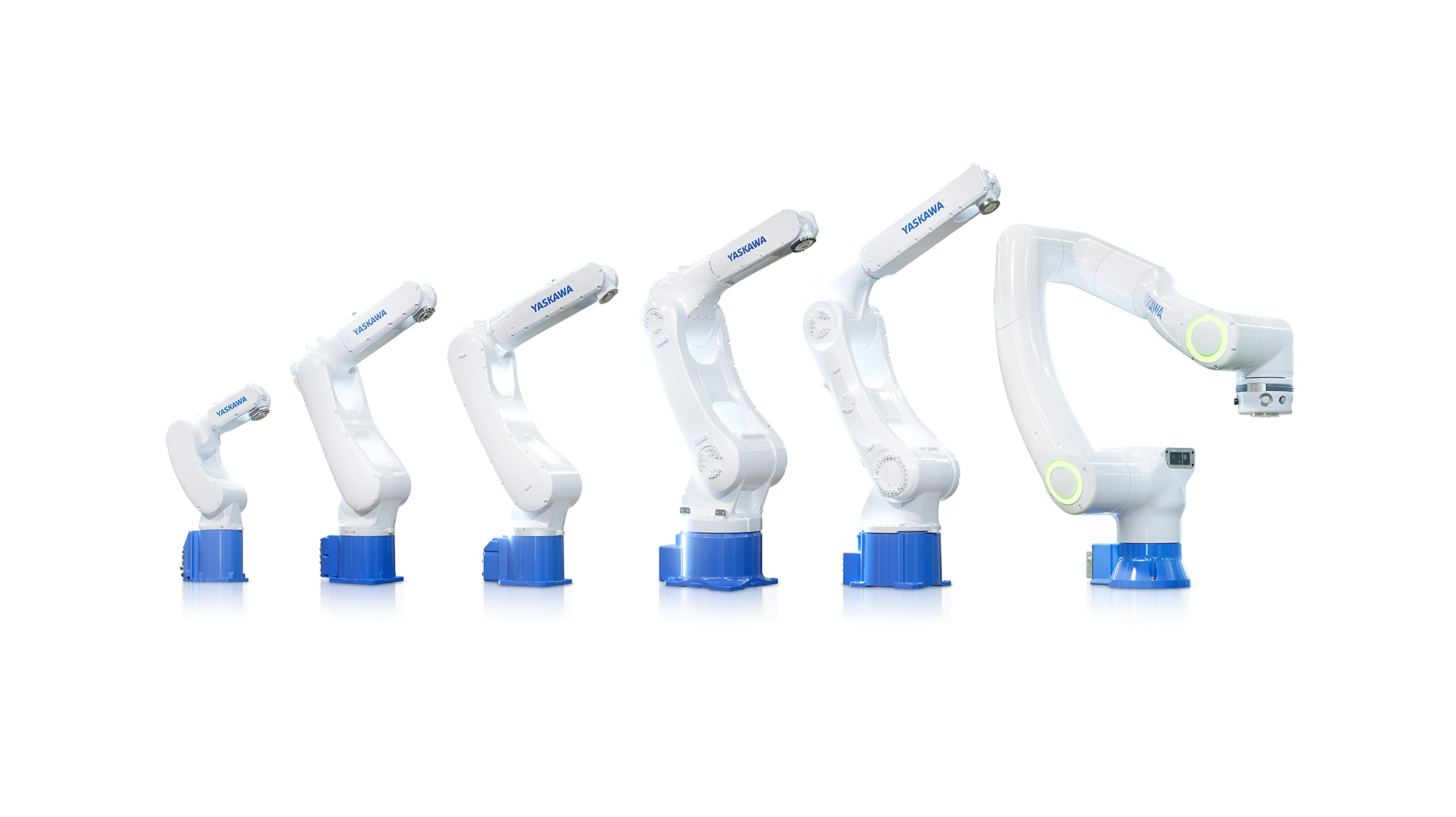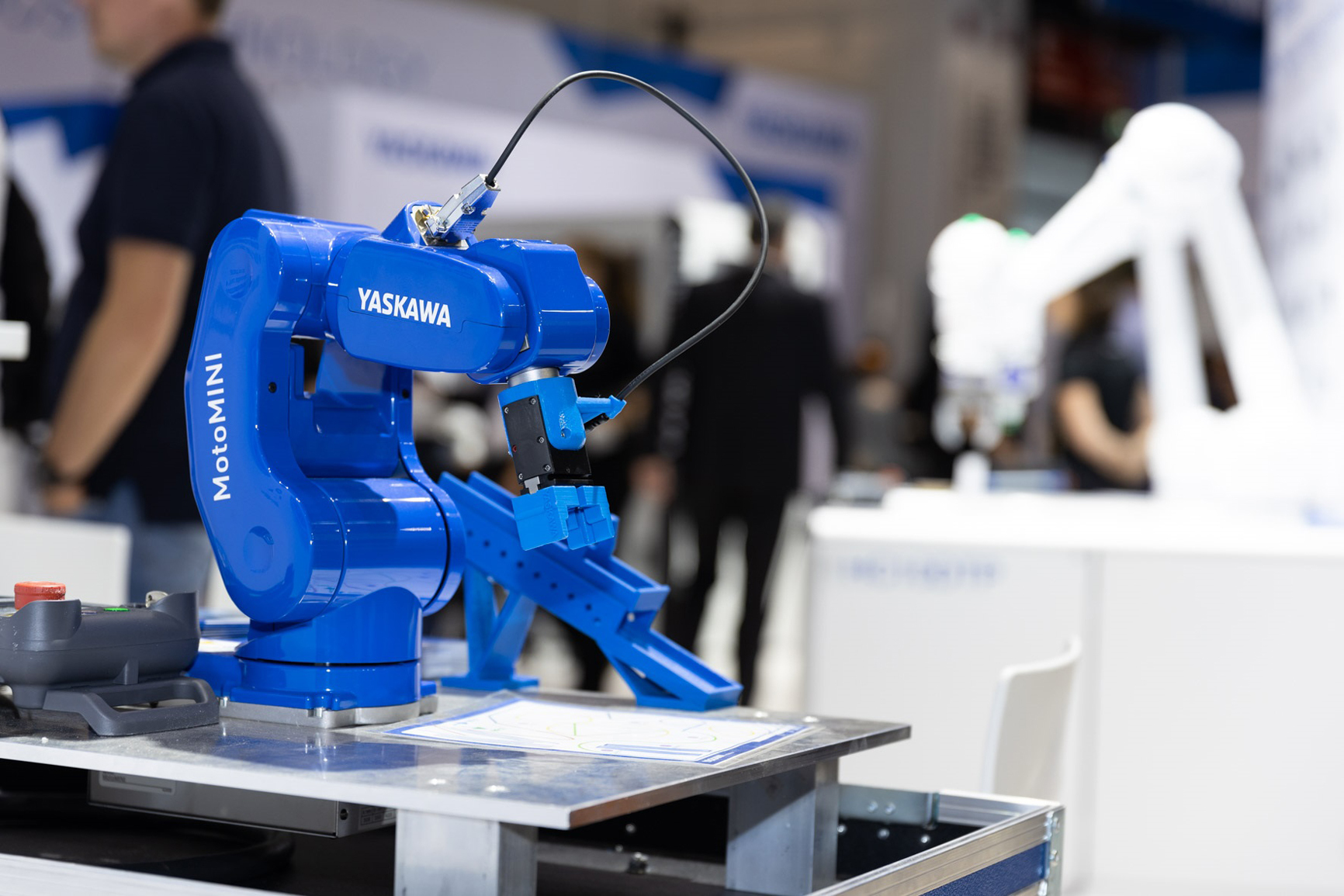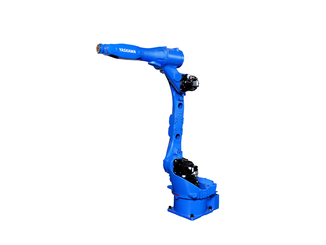
With Motoman Next, a new system comprising robot and control hardware and software, Yaskawa is making it easier to get started with AI-based robotics: users, software developers and system integrators can easily implement adaptive, intelligent robotics applications that were previously considered difficult or uneconomical to automate due to the hand-eye coordination required.
Automation with robots in combination with AI, image processing and sensor technology is seen as the key to overcoming the consequences of demographic change and labor shortages. Motoman Next is a coordinated system of robot and control hardware and software. The RCU (Robot Control Unit) is supplemented by an ACU (Autonomous Control Unit), which is based on a powerful Nvidia Jetson-Orin NX edge device with integrated CPU and GPU. This system runs a Linux host operating system that enables the simple installation and execution of Docker containers. Yaskawa already provides central basic robotics functions in the form of pre-installed software services and skills – including automatic collision-free path planning, control of all OT functions of the robot and modular function blocks for force sensors and 2D/3D/KI-based image processing (Halcon Library). A gRPC ROS bridge for the integration of ROS2 application modules opens up access to the ROS community.
All-in-one robot control platform
By integrating both robot control worlds, Motoman Next enables the synergy of programming methods from the classic signal-based automation world (OT) and the data-based IT world on a single platform for the first time – a separate PC is no longer required to operate adaptive robot applications in the field. Yaskawa manages the hardware platform and the core software modules (services and skills) itself and thus takes over the time-consuming setup of a Linux PC and the maintenance of software modules with core robotics functions.
Engineering and digital twin
The package also includes a professional engineering and simulation tool (YNX Robot Simulator), which acts as a digital twin for building, testing and optimizing intelligent robotics solutions. Alternatively, experienced software developers can also use engineering tools from Nvidia (IsaacSim), which Yaskawa fully supports as one of the world’s first manufacturers of industrial robots.
Producing instead of programming
Traditional industrial robots are programmed for a previously known and precisely defined range of workpieces and quantities. If this range grows too quickly or changes constantly, the user wants flexible robots that can detect, understand and react to new situations and workpiece variants with the help of sensors (e.g. cameras, force sensors). This is often necessary for everyday tasks such as loading, assembly, cleaning, sorting, harvesting or packaging – in other words, for tasks that were previously considered difficult or uneconomical to automate because they require hand-eye coordination, dexterity or decision-making skills. Such more complex tasks can be found in traditional industry, but also in new markets such as logistics, large-scale catering, healthcare, construction and recycling – in other words, in areas where automation does not yet exist and where there is an acute shortage of personnel.
OT and IT integrated
For the development of flexible, adaptive robot applications, AI comes into play in conjunction with sensor technology, which is developed in the world of IT software experts on PC platforms and then has to be laboriously connected to the automation world of robot control. The world of data (IT) therefore meets the world of signals (OT). Motoman Next integrates these two worlds on one robot controller.
The standard services (Docker containers) included in the package for path planning, robot status, image processing, sensor technology and AI provide all the necessary robotics functions, are matched to the Motoman robot hardware and avoid all possible typical robot pitfalls for robot programmers such as singularities, interpolation points and speed-dependent path behavior when looping over.
Motoman Next therefore makes it possible for PC software developers to immediately program robot applications without robotics knowledge and install them with Docker containers. With Motoman Next, system integrators can easily enter the world of adaptive, AI-based robotics without paying license fees for development platforms.
Robot operators immediately feel at home on the robot’s intuitive “Smart Pendant” tablet (Android). All they have to do is describe what the robot should do and in what order. This is done with the help of block diagrams or web HMIs, in which workflows can be created using ready-made, AI-based “skills”.
Automatic, collision-free path planning
Among the services provided as standard, automatic collision-free path planning stands out in particular: the robot has data about its environment (static or variable environment model) and can move from A to B with a single command without colliding with the arm, the TCP or the workpiece with its environment. On the one hand, this makes it much easier to teach positions and, on the other, creates the basic prerequisite for AI-planned robot paths.
Robot models
The model range of the new Motoman Next industrial robots (Nex series) extends from 7 to 35 kg payload. According to Yaskawa, all models are absolutely accurate thanks to the newly designed servo drive technology (“zero gap” between the digital and real world). Another pioneering feature of the Motoman cobots in the NHC series is the built-in RGB-D “bodycam”, which allows the cobot to monitor its work area and react adaptively to events.
Web:
www.yaskawa.de




